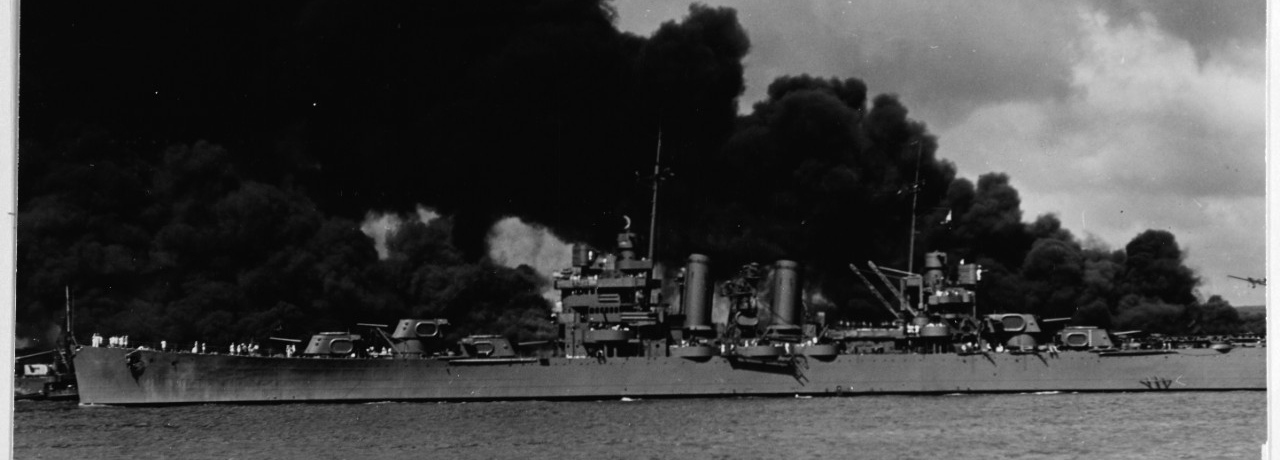
Raid Aftermath
No sooner had the raid ended than U.S. forces attempted to locate the Japanese carrier fleet, with a view to delivering some kind of counter-blow. Many cruisers and destroyers left Pearl Harbor, joining the aircraft carrier Enterprise and other surface ships that were already at sea. The few surviving flight-worthy aircraft were also sent out. Much of the search was directed southwards, rather than to the north where Japanese ships were already steaming away after recovering their planes. Fortunately for the outnumbered Americans, no contact was made.
On 8 December, President Franklin Delano Roosevelt addressed the Congress to ask for a declaration of war against Japan. Referring to December Seventh, 1941, as a "day that shall live in infamy", he gave the Pearl Harbor attack its most famous and enduring title. Within a few days, Germany and Italy had declared war on the United States. Even before the President's speech, Americans were flooding recruiting offices to try to join the Armed Forces. For those already in the Service, the formality of war was now present, though for most, the grim reality of the experience was still well in the future.
Also on 8 December, Vice Admiral William F. Halsey brought his Enterprise task force into Pearl Harbor, where the enormity of the destruction shocked all hands. Halsey's comment, "Before we're through with 'em, the Japanese language will be spoken only in hell!", probably represented a universal feeling, not just in the Fleet, but in virtually the entire Nation.
Four days after the raid, on 11 December, Secretary of the Navy Frank Knox arrived at Pearl Harbor for a personal inspection. On his return to Washington, he recommended the relief of the Pacific Fleet's commander. Admiral Husband E. Kimmel was temporarily replaced by the Battle Force commander, Vice Admiral William S. Pye. Kimmel's permanent replacement, Admiral Chester W. Nimitz, who had been Chief of the Bureau of Navigation, arrived on Christmas Day and took command at year's end.
Knox's brief visit to Pearl Harbor was but the first of a long series of official investigations into the causes of such a successful enemy surprise attack. However, the most important element of the aftermath of the Pearl Harbor attack, the fighting of World War II, could not await the outcome of such proceedings. For six months, Japan would encounter few reverses to its energetic offensives. Then, in May and June 1942, it would be twice checked, in the carrier battles of the Coral Sea and Midway. With its offensive power greatly diminished, Japan was soon engaged in a brutal attrition campaign over Guadalcanal, and, beginning in 1943, was on the receiving end of a relentless American drive west across the Pacific and north from Australia that brought vengeance for Pearl Harbor forcefully into the Japanese Home Islands.


